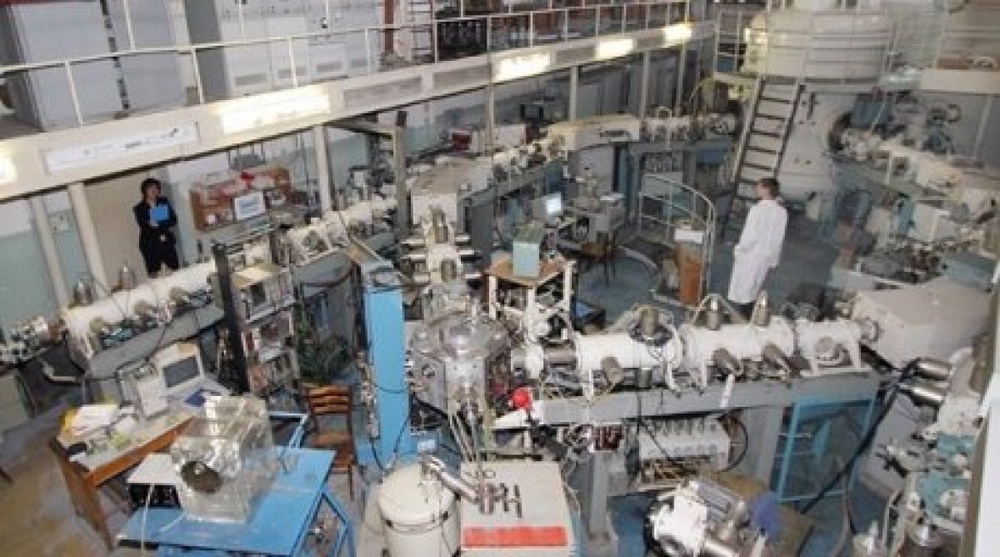
The Institute for Nuclear Physics under the National Nuclear Energy Center has started conversion of the research BBP-K reactor 20 km to the south of Almaty, Interfax-Kazakhstan reports, citing the Institute’s Director Erlan Batyrbekov. “The Institute has launched a project to covert its BBP-K reactor; the project includes works to remove and dispose of the fuel waste, and downgrade the highly–enriched uranium (with content of uranium – 235 making up less than 20%)”, Mr. Batyrbekov told in his recent interview for Vecherny Almaty (Evening Almaty) newspaper September 11. According to him, a project to replace the fuel for low-enriched options is under way. “We have developed a new fuel assembly working on low-enriched uranium”, he said. He elaborated that “low-enriched uranium is less hazardous to use and is of no interest to those hunting for nuclear materials”. “Three pilot fuel assemblies have been made, with the endurance tests to be run before the spring 2013. Should the tests be successful, all the fuel will be changed for low-enriched options”, Mr. Batyrbekov said, adding that plans are there to reconstruct another two research reactors based in Kurchatov. When working on the new fuel assemblies and active zones for the to-be reactors the Institute collaborates with Luch (Ray), a Russian nuclear institute in Podolsk. “There is a new project round the corner to launch a new nuclear safety training center (…) which is being created under the aegis of the Committee for Nuclear Energy and is supported by the US Department of Energy”, he said. According to him, the Center will be training specialist from Kazakhstan and other Central Asia states to protect and control nuclear materials as well as to counteract illicit turnover of nuclear and radioactive materials. ВВР-К is a reactor that uses thermal neutrons, with desalinated water acting as heat-transfer agent, moderator and reflector. The reactor was launched in 1967 and worked at the capacity of 10 megawatt before 1988. From 1988 to 1998 the capacities were reduced to 6 megawatt. The reactor among other things is used to produce medicinal radioisotopes, gamma sources, to dope silicon, carry out neutron activation analysis.





The Institute for Nuclear Physics under the National Nuclear Energy Center has started conversion of the research BBP-K reactor 20 km to the south of Almaty, Interfax-Kazakhstan reports, citing the Institute’s Director Erlan Batyrbekov.
“The Institute has launched a project to covert its BBP-K reactor; the project includes works to remove and dispose of the fuel waste, and downgrade the highly–enriched uranium (with content of uranium – 235 making up less than 20%)”, Mr. Batyrbekov told in his recent interview for Vecherny Almaty (Evening Almaty) newspaper September 11.
According to him, a project to replace the fuel for low-enriched options is under way. “We have developed a new fuel assembly working on low-enriched uranium”, he said.
He elaborated that “low-enriched uranium is less hazardous to use and is of no interest to those hunting for nuclear materials”. “Three pilot fuel assemblies have been made, with the endurance tests to be run before the spring 2013. Should the tests be successful, all the fuel will be changed for low-enriched options”, Mr. Batyrbekov said, adding that plans are there to reconstruct another two research reactors based in Kurchatov.
When working on the new fuel assemblies and active zones for the to-be reactors the Institute collaborates with Luch (Ray), a Russian nuclear institute in Podolsk. “There is a new project round the corner to launch a new nuclear safety training center (…) which is being created under the aegis of the Committee for Nuclear Energy and is supported by the US Department of Energy”, he said.
According to him, the Center will be training specialist from Kazakhstan and other Central Asia states to protect and control nuclear materials as well as to counteract illicit turnover of nuclear and radioactive materials.
ВВР-К is a reactor that uses thermal neutrons, with desalinated water acting as heat-transfer agent, moderator and reflector. The reactor was launched in 1967 and worked at the capacity of 10 megawatt before 1988.
From 1988 to 1998 the capacities were reduced to 6 megawatt. The reactor among other things is used to produce medicinal radioisotopes, gamma sources, to dope silicon, carry out neutron activation analysis.

 +7 (777) 001 44 99
+7 (777) 001 44 99




 Қазақша
Қазақша Русский
Русский English
English














































